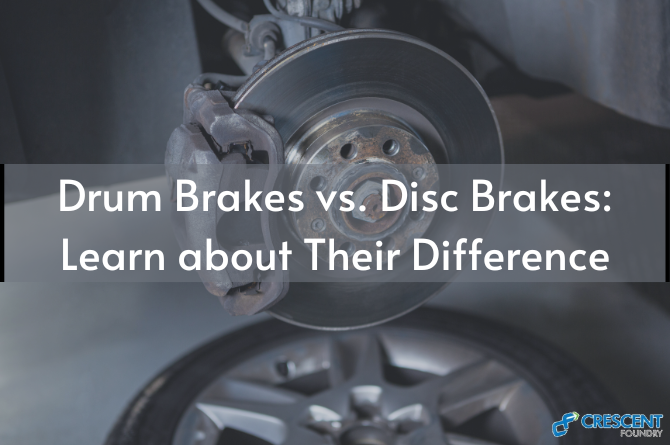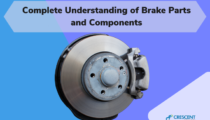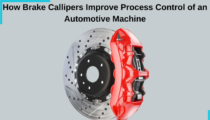The automotive industry largely depends on the braking system for…

Drum Brakes vs. Disc Brakes: Learn about Their Difference
The advancement in technology has brought about several transformations in braking systems in the automotive industry. A braking system is just as essential for any mechanical device/system as any other component. With the variety of performance requirements, several braking systems have come into being—disc and drum brakes being among them. Brake disc suppliers in India look forward to a growth of 3.2% of the brake disc market between 2021 and 2030—as the demand for commercial cars increases. Robust drum brakes market trends too look equally pleasing for manufacturers.
Knowing The Function Of Braking Systems
For proper functioning of mechanical devices or any automobile machinery, a functioning braking system is also important. So what exactly does a brake do and how do they work?
A brake system employs friction against the component that is in motion to bring the movement to a stop. Brake disc and brake drum manufacturers in India define that— both the braking systems bring the moving wheel to a halt by converting kinetic energy into heat energy.
Drum Brakes vs. Disc Brakes
When it comes to braking systems for passenger cars, disc brakes and drum brakes are the two primary types. Although the function of both the brakes are same, the design and operations differ.
- Installation – Disc brake systems have several components like brake pads, callipers, rotors, hydraulic fluid line and hydraulic fluid storage. On the other hand, drum brake systems typically include brake drum, brake shoes, wheel cylinders, anchor plate, adjuster, return springs, fastening as well as actuating elements. Since there are fewer components in the disc brake system, installation-wise, it is comparatively easier in comparison with drum brakes.
- Position – In many countries, the only kind of brakes present on cars’ front wheels are disc brakes, as well as on all four wheels. Drum brakes are mostly found on the rear of passenger vehicles. Because of better stopping power, disc brakes have replaced drum brakes— even though drum brakes are still in use.
- Performance – Both disc brakes and drum brakes were introduced roughly around the same time. However, disc brakes took a while before it gained confidence and became practical enough to be used in the automotive industry.
One of the first market leaders to identify and differentiate the performance of disc brakes over drum brakes was Jaguar. The company also sold a vehicle with disc brakes in the same year when they figured that a race car with disc brakes had outperformed cars with drum brakes.
Moreover, drum brakes have the reputation of slipping or grabbing, unlike disc brakes— making disc brakes preferable for wet conditions/weather. - Cost – Drum and disc brakes use different components to function and naturally, they differ in terms of cost and pricing. Drum brakes are less expensive than disc brakes, and the price of a new car reflects this cost differential. An automobile with disc brakes on both front and rear wheels costs more than one with disc brakes on the front wheels and drum brakes on the back– even though the rest of the components are kept the same. Additionally, as per brake drum manufacturers in India, manufacturing drum brakes is less expensive than disc brakes.
- Durability – Although the brakes function on the same principle, they have different lifespans. Drum brakes have a larger friction contact surface than a disc, which means they are subjected to fewer wear and tear. Drum brakes towards the back produce less heat too. Also, drum brakes automatically refill themselves, requiring less input force (like hydraulic pressure in disc brakes). These make drum brakes more durable than disc brakes. Keep in mind that while the design and components do affect the longevity of the brakes, it also largely depends on the usage. So to increase the durability of brake parts it is very important to know how to Choose the right size brake disc for aumotive applications.
- Heat Dissipation – The build and design of drum brakes do not allow an exit way for the heat energy that is caused when the brakes are applied. Because they lack a way to cool off, drum brakes frequently overheat. This happens particularly when used in high-braking situations like travelling down a slope or even rapidly stopping while being at a high speed. On the other hand, disc brakes have a larger surface area to allow heat dissipation which allows the brake rotors to cool off quickly. Brake disc suppliers in India recommend using disc brakes in automobiles which requires a higher braking power.
- Maintenance – Maintenance is essential for ensuring the performance of the brakes in automotive machines. Hence, both the braking systems require proper maintenance for effective functioning. Disc brakes, which have fewer parts and are exposed are easy to gain access to. However, disc brakes may require more maintenance than the drum brakes because of brake pad wear.
While both drum and disc brakes have their advantages and disadvantages, choosing them in automotive machines depends on the usage and expected efficiency. Crescent Foundry, one of the largest and prominent market leaders for automotive solutions, caters to custom brake drums and brake discs (and other parts) of the highest industry standards.



